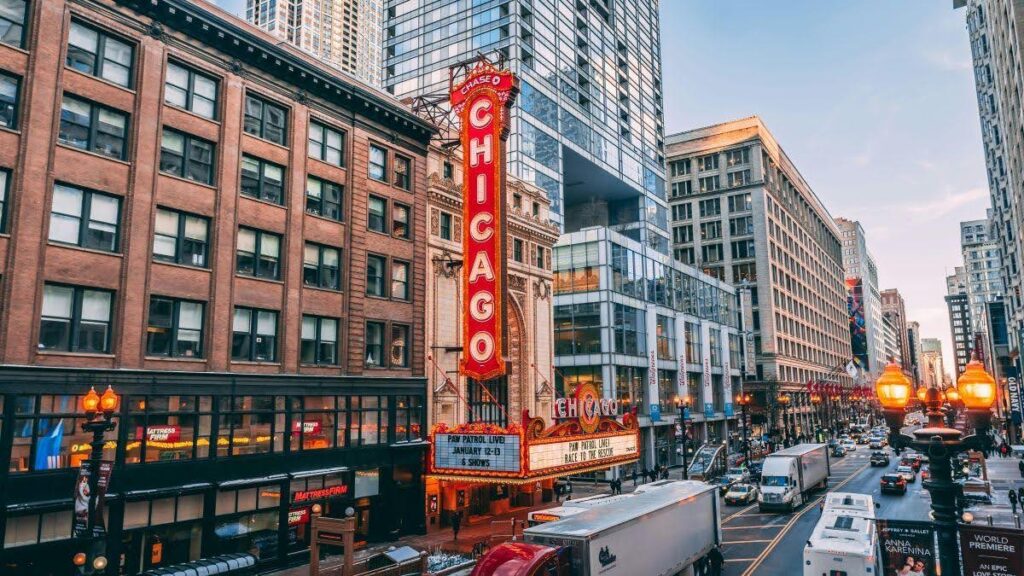
Moving is more than a simple decision. It often reveals who has money, choices, and freedom. In Chicago, that truth is especially sharp.
Some residents can easily pack up and leave a neighborhood when prices rise. Others cannot leave, even when rent eats most of their paycheck. As a matter of fact, relocation reflects economic freedom in 21st-century Chicago.
The big question is simple. Who gets to move, and who stays behind? The answer shows us what freedom really looks like in a city divided by income, race, and opportunity.
Who Gets to Move and Why It Matters
Mobility is not the same for everyone, and when your destination is far away, things can get complex. People with higher incomes move more often, usually for better homes or jobs. For them, moving feels like progress.
For lower-income families, relocation often comes with stress. Moves may happen after an eviction notice or a rent hike. Not to mention, many are forced to relocate far from schools or support networks.
Homeowners experience stability because mortgages lock them in place. Renters move more often because leases are short and prices change fast. Younger people also move more, chasing work, education, or affordable apartments.
Each move tells a story. With this in mind, mobility reveals who has control over their future. Those who can move freely often have better opportunities. Those who cannot are left in cycles of struggle.
Adjusting After a Move: Building Comfort and Connection
Moving into a new place can feel exciting but also overwhelming. The first months matter because they shape your sense of home.
Start by exploring nearby shops, cafes, and parks. Small routines create familiarity and help you feel rooted in your surroundings. As a matter of fact, daily walks can introduce you to hidden spots and friendly faces.
Another key point is meeting neighbors. Simple conversations go a long way toward building trust and support. Join local events or volunteer opportunities to connect with people who share your space.
Take time to learn about local services, schools, and transit options. This helps reduce stress and makes life easier day by day. When you get to know your neighborhood, you will feel settled faster.
In short, adjusting well is about patience, openness, and small steps that turn a new place into home.

The Price of Mobility: Housing Costs and Income Gaps
Housing in Chicago has become more expensive each year. Median rents have gone up much faster than wages. Similarly, home prices in growing neighborhoods push out working families.
This gap forces many to spend more than a third of their income on housing. In short, that leaves little left for savings, food, or healthcare. Many families are left living paycheck to paycheck.
Property taxes also add pressure. As an illustration, older homeowners on the South Side face rising bills. Some sell their homes because they cannot afford the costs anymore. You need to have this in mind when relocating, especially when there are many hidden costs when moving.
Mobility, in this sense, is shaped by money. If wages fall behind, moving becomes less of a choice and more of a survival tactic.
Relocation Reflects Economic Freedom in 21st-Century Chicago
Relocation is never just about distance. It is about freedom, security, and access to opportunity. Relocation reflects economic freedom in 21st-century Chicago because it shows who holds power over their living situation.
Those with steady jobs and savings can move closer to better schools or safer neighborhoods. They have the cushion to take risks. They can plan for the future.
In contrast, families with limited resources often stay trapped. Even when safety is poor or housing is unstable, they lack the funds to move. Nevertheless, staying put is not always a choice. It can be a financial trap.
The ability to move, or to stay with dignity, is a sign of freedom. And in Chicago, that freedom is unevenly spread.
Migration Inside the City: North vs. South, West vs. Downtown
Chicago is a city of contrasts. The North Side and downtown attract new residents, while the South and West Sides often lose them.
Young professionals move closer to the city center, chasing jobs and entertainment. At the same time, longtime families are pushed out by rising costs.
In contrast, parts of the South Side see more departures than arrivals. Many families leave for suburbs where rent and taxes are lower. Another key point is that these moves often increase commute times and strain daily life.
Over the last decade, these shifts have reshaped whole neighborhoods. Population growth in some areas means a decline in others. The map of who moves shows how inequality spreads across the city.

Gentrification, Displacement, and the Limits of Choice
Gentrification has transformed several neighborhoods. Once-affordable areas like Pilsen or Logan Square now face soaring rents and property prices. This is always a risk when acquiring property in Chicago.
For some, this brings new stores, cafes, and rising property values. For others, it means displacement. Tenants are pushed out as landlords chase higher-paying renters.
Eviction rates tell the story clearly. Low-income renters face the highest risk. They often move under pressure, not because they want to leave.
With this in mind, choice is often an illusion. Some move because they can, others because they have no other option. Mobility can mean opportunity for some, but loss for many others.
Policy and Infrastructure: Barriers or Enablers of Mobility
City policies and infrastructure play a big role in relocation. Zoning laws decide where affordable housing can be built. Tax incentives shape which areas grow and which are left behind.
Public transit is another factor. Families with access to buses and trains can move farther without losing job access. Whereas those in transit-poor areas stay stuck, unable to risk longer commutes.
Housing programs also matter. Affordable housing initiatives can open doors for struggling families. Similarly, rent control efforts can slow displacement.
Policy, in short, can either protect freedom of movement or restrict it. The city’s choices decide whether mobility remains a privilege or becomes a right.
Community Stories: When Staying Becomes Resistance
Not everyone moves, even when pressures rise. Some communities resist relocation as an act of strength. Staying put becomes a form of stability and pride.
Cooperative housing and community land trusts offer examples. They keep housing affordable and block outside buyers from pushing residents out.
As an illustration, groups in neighborhoods like Bronzeville have organized to preserve local housing. They fight to keep homes in the hands of residents, not investors.
Choosing to stay can be just as powerful as choosing to move. In these cases, immobility reflects freedom, not lack of choice.

Summary: Rethinking Who Gets to Move in Chicago
Mobility in Chicago is never neutral. It reveals who holds power, who has options, and who faces barriers. Some residents move freely, chasing new chances and better homes. Others are forced to move, or stay stuck without options.
Relocation reflects economic freedom in 21st-century Chicago because it uncovers the link between movement and inequality. Freedom of movement is uneven, shaped by income, housing, and policy.
In short, who really gets to move tells us everything about justice in the city. True freedom must mean everyone has the chance to choose where they live.







